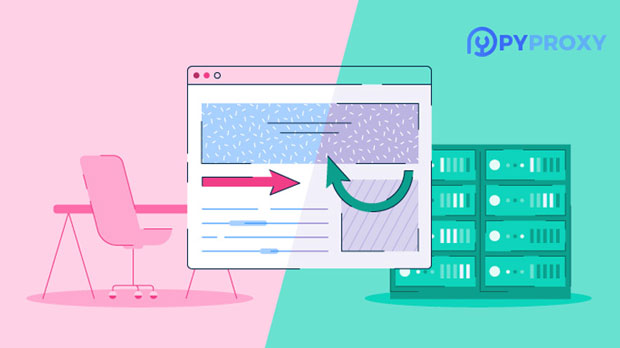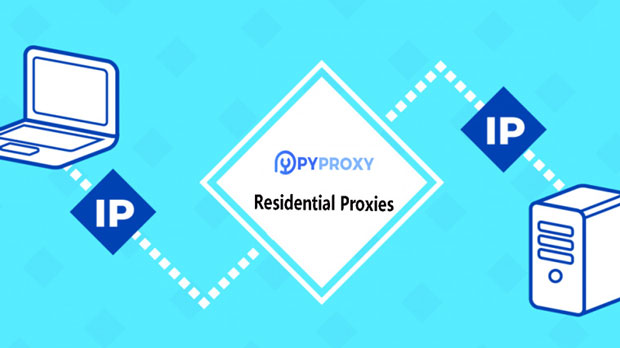In high-concurrency web scraping scenarios, ensuring optimal performance of rotating proxies is critical for the success of the data acquisition process. As scraping activities grow in scale and frequency, it becomes increasingly important to manage proxies efficiently in order to avoid downtime, maintain IP rotation, and maximize the amount of data gathered. Cheap rotating proxies, while cost-effective, often come with their own set of challenges, such as speed limitations, high latency, or even frequent blocking by websites. However, with the right optimization techniques, these proxies can still deliver excellent results for large-scale scraping tasks. This article explores the best strategies for optimizing the performance of cheap rotating proxies when scraping at high concurrency, focusing on reducing bottlenecks, improving efficiency, and increasing success rates. Understanding Cheap Rotating ProxiesBefore diving into optimization, it is important to understand the fundamental concept of rotating proxies. Rotating proxies are IP addresses that change periodically, preventing websites from recognizing and blocking your requests due to high traffic from a single IP. For cheap rotating proxies, the service often provides a pool of IP addresses, which helps mask the scraping activity.Cheap rotating proxies are typically less reliable than premium alternatives, with lower connection speeds, a higher likelihood of IP blocks, and shorter lifespans of each IP address. However, their affordability makes them attractive for budget-conscious developers or companies handling large-scale scraping tasks. When used in high-concurrency environments, where thousands or even millions of requests are made simultaneously, it becomes crucial to optimize these proxies to achieve desired outcomes without wasting resources.Key Challenges with Cheap Rotating Proxies in High-Concurrency Scraping1. Speed and Latency Issues Cheap proxies are often slower due to the limited resources allocated to each user. This can significantly affect scraping performance when dealing with high volumes of requests. Long response times can cause delays and even timeout errors, which can reduce the overall efficiency of the scraping process.2. IP Blockages and Bans In high-concurrency scraping, requests originating from the same or similar IPs in a short period of time are often flagged by websites. Cheap proxies may have a higher probability of getting blocked or blacklisted, especially if their IP pools are small or overused.3. IP Pool Exhaustion The available pool of IP addresses might be too small for extensive scraping tasks. As a result, the same IPs may be rotated too frequently or reused too often, making the scraping process slower and more prone to failure.4. Inconsistent Proxy Rotation Some proxy services, particularly cheaper ones, may not rotate IPs effectively or quickly enough, leading to a large number of requests being sent from the same IP. This increases the likelihood of detection and blocking by target websites.Optimizing Cheap Rotating Proxies for High-Concurrency ScrapingDespite these challenges, there are several techniques to optimize the performance of cheap rotating proxies in high-concurrency scraping tasks:1. Use a Proxy Pool with Diverse IP SourcesA diverse proxy pool, consisting of a variety of IPs from different geographical regions and ISPs, is essential for reducing the risk of IP blocks. To optimize performance, consider selecting proxy services that provide access to a large pool of residential and data center proxies. residential proxies tend to have higher reliability and less likelihood of being blocked, even if they are slightly more expensive. However, having a diverse proxy pool ensures that, if one IP is blocked, others can take its place without causing a significant disruption to the scraping process.2. Adjust Proxy Rotation FrequencyOne of the most important factors in optimizing cheap rotating proxies is managing their rotation frequency. The more frequently proxies rotate, the less likely it is that a single IP will be blocked or flagged by the target website. However, too rapid rotation can reduce the efficiency of the scraping operation, especially if there are limitations on the number of requests that can be made per proxy. Experiment with different rotation intervals to find the optimal balance between speed and avoiding detection.3. Implement Proxy Health ChecksProxies may fail or become unreliable over time, especially cheap proxies with limited support. Implementing proxy health checks ensures that your system automatically detects and discards any proxy that is not functioning correctly. This prevents wasted requests and ensures that only active proxies are used during the scraping process. Proxy health checks can also help identify proxies that are nearing their limit of requests and need to be replaced before they are blocked.4. Rotate User-Proxy and HeadersEven when using rotating proxies, websites can still detect and block scraping activities by monitoring other request headers like the user-Proxy, referrer, and accept-language. By rotating the user-Proxy and modifying other headers, you can make each request appear more like a legitimate user visit, reducing the chance of detection. Consider using libraries or services that can rotate user-Proxys and headers in conjunction with proxy rotation to further obscure your scraping activity.5. Use CAPTCHA Solving ServicesMany websites implement CAPTCHA challenges to prevent automated scraping. When working with cheap proxies, it's important to be prepared for this obstacle. Use CAPTCHA-solving services or integrate CAPTCHA-solving algorithms into your scraping setup. These services work by automatically solving CAPTCHA challenges and allowing you to continue scraping without interruption.6. Distribute Requests Across Multiple ThreadsTo improve scraping efficiency, distribute requests across multiple threads or processes. High-concurrency scraping requires significant bandwidth, and distributing the load across multiple proxies and threads ensures that no single proxy or server is overwhelmed. This helps to balance the load, ensuring a smooth and uninterrupted scraping operation. It also reduces the risk of any one proxy being overused and subsequently blocked.7. Leverage Scraping FrameworksMany advanced scraping frameworks, such as Scrapy, have built-in support for proxy rotation and IP management. These frameworks allow you to configure proxy pools, handle retries, and manage user-Proxy rotation automatically. By using these frameworks, you can optimize the proxy management process and ensure that your scraping operations run smoothly with minimal manual intervention.8. Implement Failover MechanismsIn high-concurrency scraping, failures are inevitable, whether due to timeouts, connection issues, or proxy blocks. Implement failover mechanisms that automatically switch to backup proxies in case of failure. This ensures that the scraping process continues without manual intervention and reduces downtime. A well-designed failover system can dramatically improve the robustness of your scraping operation.9. Monitor and Scale Proxies as NeededAs your scraping activity grows, it’s essential to monitor the performance of your proxies and scale your infrastructure accordingly. If your current proxy pool is not sufficient to handle the volume of requests, consider expanding your proxy pool or upgrading to more reliable proxy services. Monitoring tools can provide insights into performance metrics such as connection speed, success rate, and IP rotation efficiency, helping you make data-driven decisions about scaling your proxy resources.Optimizing cheap rotating proxies for high-concurrency scraping involves several strategies that help manage proxy rotation, avoid blocks, and increase efficiency. By using diverse proxy pools, rotating IPs and headers, implementing health checks, and using advanced frameworks, you can ensure that your scraping operations remain efficient and successful. Though cheap proxies may have limitations, with the right optimization techniques, they can still perform effectively even in high-concurrency environments. By applying these strategies, you can extract valuable data while minimizing the impact of common challenges associated with rotating proxies.
Oct 15, 2025



































































